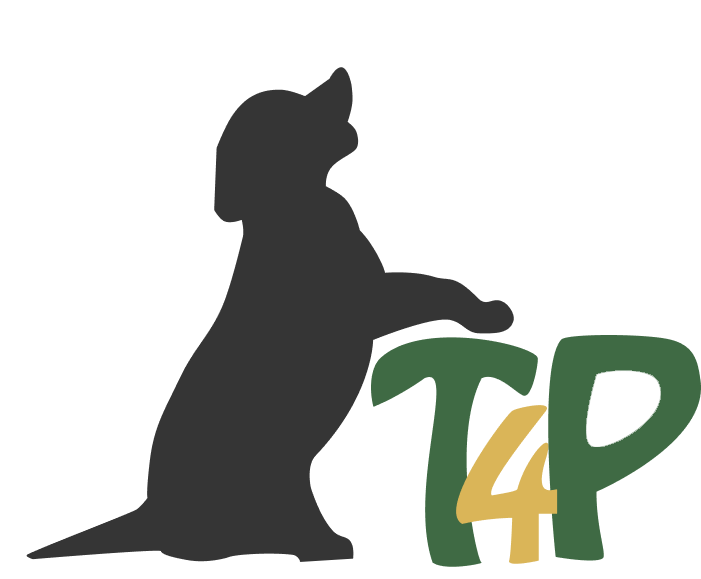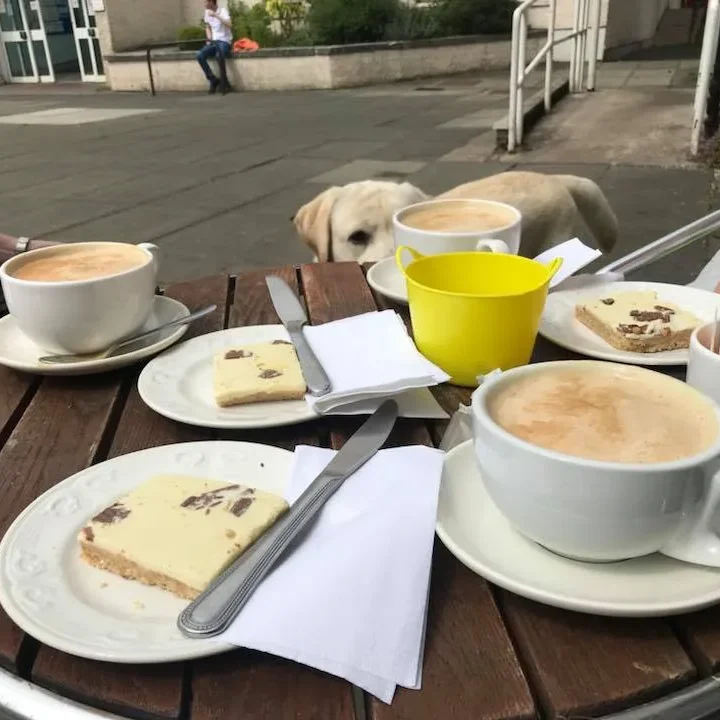This is how you teach your dog to walk on a loose leash
Vegetable and Dessert for a loose leash
Like many dog owners, Liz and her fifteen-month-old Labrador Bear are challenged with walking on a loose leash. Bears specialty: He loves other dogs so much that he lunges forward to reach them and as an uncastrated male, he drags Liz to the nearest lamppost, to study it extensively and leave a like. Liz’s problem: Bear weighs 40 Kilos and he uses his full body weight to reach his goal.
For a three-day crash course at Lothlorien Dog Services, both have traveled from the beautiful Scottish island of Arran. Among other things, Bear’s Training consisted of several units to walk on a loose leash.
Claire’s approach to this consists of three steps:
Step 1: The Engagement Game
Before Bear embarks on his outdoor adventures, Liz reinforces Bear turning away from competing environmental stimuli and making eye contact with her. She only starts their walk, when Bear clearly shows that he is with her by checking in reliably about every two seconds.
Step 2: The Premack Principle
Claire calls this: Granny’s Law: “If you eat your vegetables, then you can have your dessert”. Behavior that is not frequently shown by the dog is reinforced by behavior that the dog often shows because it is either intrinsically motivated, i.e. that the behavior in itself gives the dog pleasure or because it has been positively reinforced so often that he likes to do it.
Bear’s vegetables in this case are walking on a loose leash. His dessert is that, after he kept a loose leash, he is allowed to sniff at the nearest lamppost or the next corner of a house. If Bear does not eat his vegetables and the leash tightens, then Liz stops immediately to avoid self-rewarding behaviour on a taut leash. Sorry Bear, no dessert! Only when Bear turns to Liz and lets the leash loose again, they go on.
No treats?
Why does Claire at this stage not use treats for walking on a loose leash?
First of all because they are not needed. The reward Bear wants at this moment, his primary reinforcer, is sniffing and marking. In addition, the use of treats would risk that Bear builds a behaviour chain: I run forward until the leash is tight, then orient myself back to Liz, get a treat and because it was so nice, I’ll do it all over again.
Step 3: The Three Ds: Duration, Distraction, Distance
Here comes the sausage! If Bear has to make it through a very long period of “vegetable” with no lamppost in sight, or has to pass people whom he would like to say hello to, Liz rewards his discipline with the marker word “Yes!”, followed by a treat. Since Bear is an extremely social dog who wants to meet every other dog, he even gets a whole treat bomb as a jackpot if he is able to hold himself back in this situation. The sight of the other dog is rewarded with a handful of sausages scattered on the ground in front of Bear. This has the positive side effect that sniffing and picking up the treats from the ground has a calming effect on Bear and also on the other dog, who sees the imposing male deescaling lowering his head.
What can go wrong?
If the environmental disatraction is too big and Bear is not able anymore to keep the leash loose, Liz goes back to Step 1 and plays the Engagement Game with him until Bear manages to make eye contact with her about every two seconds and concentrate on his guardian again, before they go on.
My Highlights
What I really liked about this session was the joy and the fabulous timing with which Liz praised her Bear verbally and Claire’s fairness to the dog. When the dog-Facebook-post on the lambpost was particularly important to Bear, then he was allowed to read, like and comment on it extensively. This was he well deserved me time in return for giving everything for Liz and fulfilling her wishes the rest of the time. The training on the Premack principle, rewarding with stimuli from the environment of the dog, trains the eye of the owner for the needs of the dog and what makes him happy.
At the end of our training, Liz and Bear mastered a relaxed city walk and after the strenuous vegetable training Liz also got her well-deserved dessert.
Thank you Liz for letting me write about you and your Bear and thank you Claire, for being so positive about sharing your knowledge.



